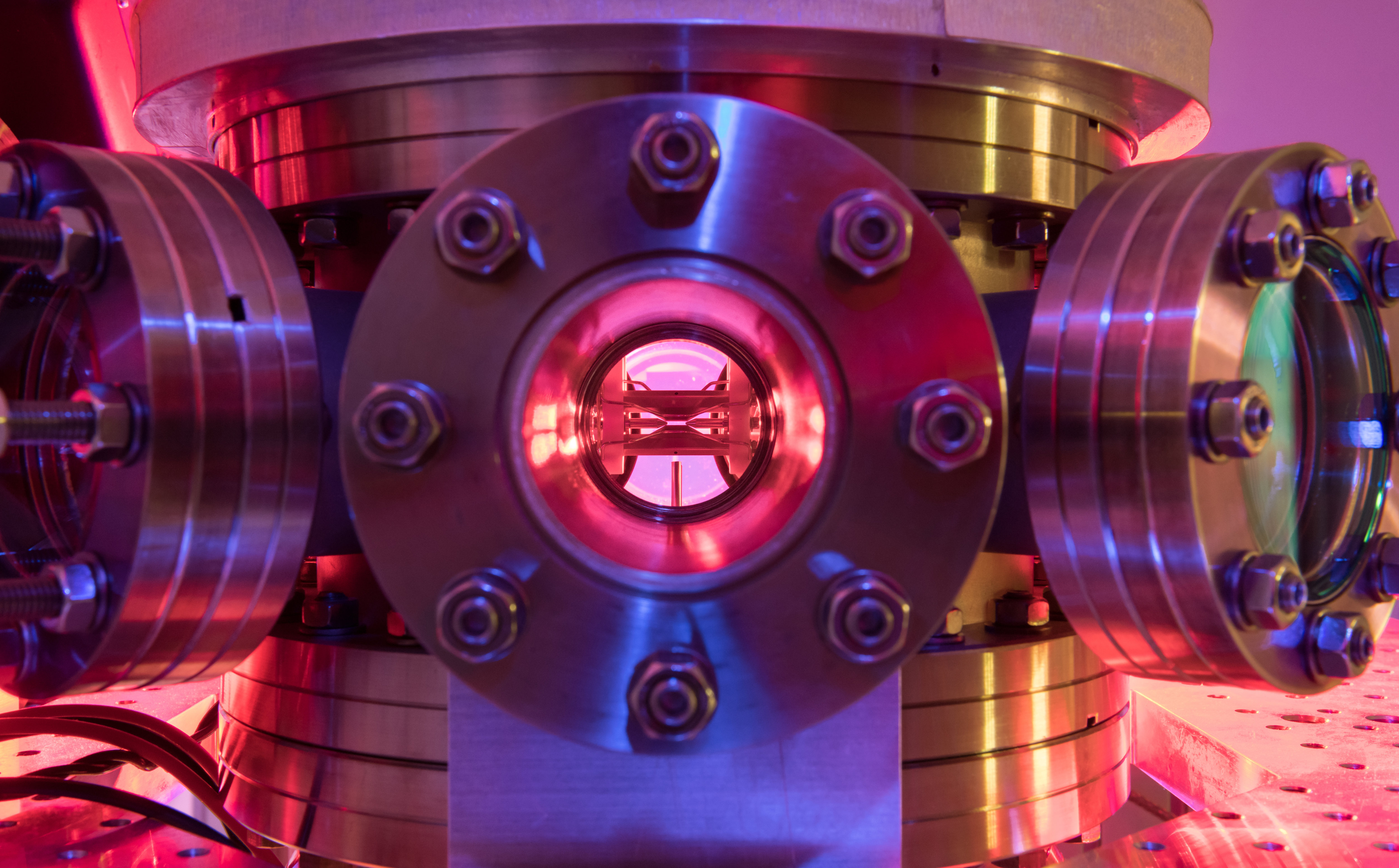
Trapped-ion qubits
The first implementation of a quantum gate, the basic quantum circuit of a quantum computer, has been realized with ions, held in so-called ion traps. Research is already well advanced with this approach. In the laboratory, 20 to 50 qubits are routinely used, and companies offer rack-based systems ready for use.
In this approach, qubits are encoded in individual addressable, cooled ions, trapped in an electrical potential. Quantum gates are realized by local laser pulses of different frequency and length, allowing for a coherent manipulation of the state of individual ions. The main advantage of this platform is the large number of possible computational operations due to a relatively long decoherence time and short operation times.
Within Munich Quantum Valley, scientists will take advantage of the many years of experience with this hardware technology to use it as a test bed for the integration of a quantum computer into a supercomputing environment. A trapped-ion quantum computer will be used to identify and address the general requirements for hybrid quantum- and high-performance computing. In addition, research on fault-tolerant quantum computing and its realization with ion traps will be advanced.